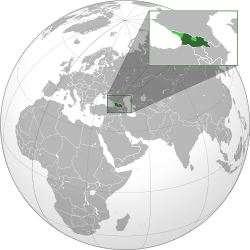Central Asia And Caucasus: The Promise And Pitfalls Of New Election Technologies
In announcing that Georgia’s parliamentary elections would take place October 1, President Mikheil Saakashvili’s administration affirmed its commitment to conduct what one official said would be an “exemplary” vote. New technologies are helping election monitors hold officials to such pledges, but they still have limitations, experts say.
While new technologies can support efforts to promote clean elections and, more broadly, the overall democratization process in Eurasia and elsewhere, they are not necessarily a difference-maker. That was the conclusion of participants in a recent panel discussion hosted by the International Foundation for Electoral Systems (IFES) in Washington on July 19.

Rakesh Sharma, Director of Applied Research at IFES, reviewed how the last few years have seen substantial increases in access to these technologies, which include mobile phones, the Internet, social networks and other multimedia devices. This growth has been especially rapid in the developing world.
Shama explained how IFES has used these new technologies to support much of its election work, including activities related to voter registration, voter education, and electoral logistics. He cautioned, however, that “the tools are just that – they are tools.” He said that “in order to use them effectively, we have to consider various issues … and also the challenges that come in using them.” It also critical to “recognize the limitations of technologies,” he said.
Another IFES expert, Mike Yard, spokes about the organization’s experience in employing new technologies in Armenia. Its parallel vote tabulation system used in the 1999 legislative elections demonstrated that some district officers who were receiving the vote counts from precinct polling stations were “altering the results.” The parallel vote tabulation system that IFES helped develop detected “massive fraud of this type and this led to the overturning of the results in 12 different parliamentary races” in that 1999 ballot.
IFES was ready to deploy a similar system for Armenia’s 2008 elections, but “at the last minute the Central Election Commission rejected the system.” Yard recalled that “many critics said it was rejected because it was too transparent.” The 2008 elections were marked by widespread charges of electoral fraud that led to massive protests and a violent crackdown on the protesters.
Yard offered several guidelines for non-governmental organizations and others seeking to employ new election tools in upcoming elections. First, “technology should serve the goals … rather than altering the goals so that we can implement technologies.” In this regard, “it is critical that you start out knowing what you want to accomplish and then looking for what are the right and appropriate technologies to use to accomplish your goals.”
Furthermore, “it is critical to take enough time to implement the system.” Yard insisted that “there have to be a series of iterations” of the design in a way that involves all the election stakeholders in order to make comfortable with the system. He said that experience had demonstrated the need to refine the system for applying these technologies through feasibility and usability and beta tests “to make sure you have a good design.”
“Successful implementation of [voting] technology is not just about technology,” Yard said. “It is also about making sure that all of the human players accept the technology, support it, and finally know how to use it.”
One risk of the new electoral information transparency tools is that they make it easier to determine the identity of the various individuals in the data set. Yard stressed the need to preserve data privacy by following some basic principles such as “disclose ahead of time every way you will use the data” and “only use the data for election purposes” and clarify “who will have access to the data.” Yard added that governments also should not require that voters disclose their occupation, ethnicity, and so forth in voter registration forms since “these things are not required for the conduct of an election.”
Eric Gundersen, president and co-founder of Development Seed, offered an expert’s perspective on presenting open data effectively as well as using open software, such as web-based mapping tools, to help visualize the data. “This is a really exciting time to be going into the data visualization space because of … open source tools like Mapbox, and… the general open data movement,” he said during the IFES panel discussion.
This article was published at Eurasianet.org and reprinted with permission
